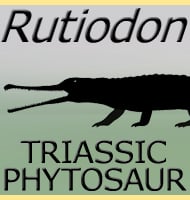Majiashanosaurus
In Depth Majiashanosaurus is a genus of sauropterygian reptile that lived in waters around China during the early Triassic. Further Reading - The Early Triassic eosauropterygian Majiashanosaurus discocoracoidis, gen. et sp. nov. (Reptilia, Sauropterygia), from Chaohu, Anhui Province, People’s Republic of China. - Journal of Vertebrate Paleontology 34 (5): 1044–1052. - Da-Yong Jiang, Ryosuke Motani, … Read more
